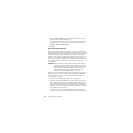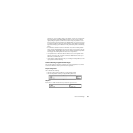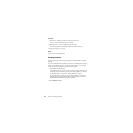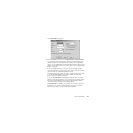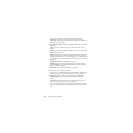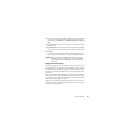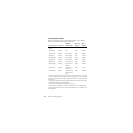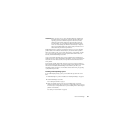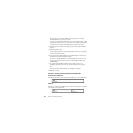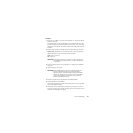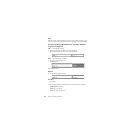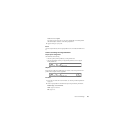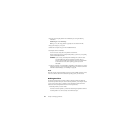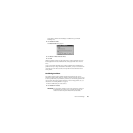
Chapter 3: Managing Partitions38
Creating Bootable Partitions
Before creating a partition where you plan to install an operating system (a bootable
partition), you should understand the following information.
* Windows NT/2000/XP must boot from a primary partition on the first drive. However, only a few files
must reside on that partition; the remaining files can reside on a logical partition, which can be located
on the first or a subsequent drive. The Windows NT/2000/XP boot partition can be shared with another
operating system.
** Having an LBA-compatible (Logical Block Addressing) MBR (Master Boot Record) will make the boot
code boundary null with Windows 98SE/Me/2000/XP.
*** Windows XP automatically promotes NTFS partitions to version 3.1.
† If you install LILO to a logical partition, it must be the first logical partition in the extended partition.
‡ Linux also supports the partition types FAT, FAT32, and NTFS (read-only) if Linux is installed to a Linux
Ext2/Ext3 partition.
Operating System Boots from
Supported
Partition Types
Boot Code
Boundary
Space
Required
DOS 6.22 and
earlier
Primary FAT 2 GB 8 MB
Windows 95a Primary FAT 2 GB 90 MB
Windows 95b Primary FAT or FAT32 8 GB 90 MB
Windows 98 Primary FAT or FAT32 8 GB 175 MB
Windows 98SE Primary FAT or FAT32 8 GB** 190 MB
Windows Me Primary FAT or FAT32 8 GB** 300 MB
Windows NT Primary* FAT or NTFS 1.2 2 GB 120 MB
Windows 2000 Primary* FAT, FAT32, or
NTFS 3.0
8 GB** 650 MB
Windows XP Primary* FAT, FAT32, or
NTFS 3.1***
8 GB** >1 GB
Linux (LILO†) Either Linux Ext2, Linux
Ext3‡ and Linux
Swap
8 GB >250 MB





